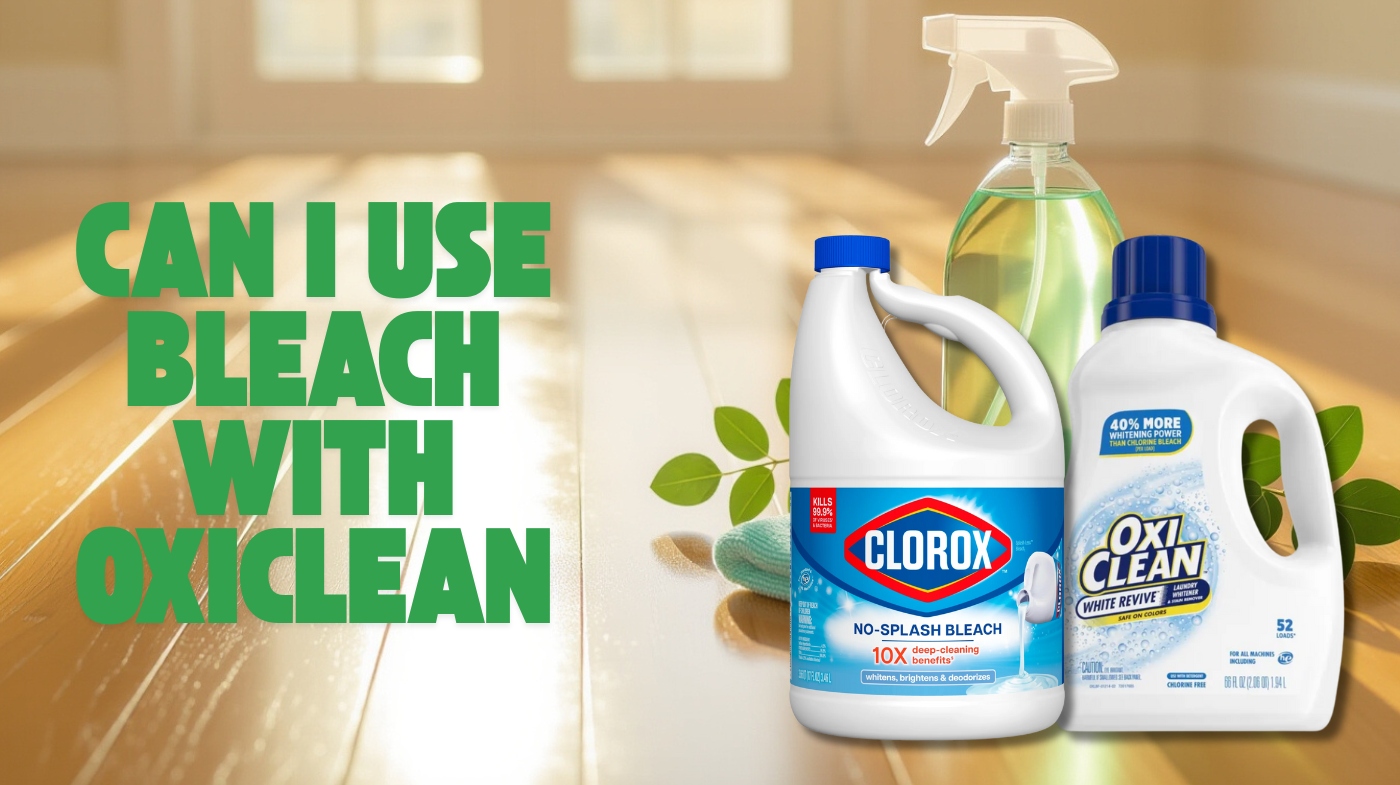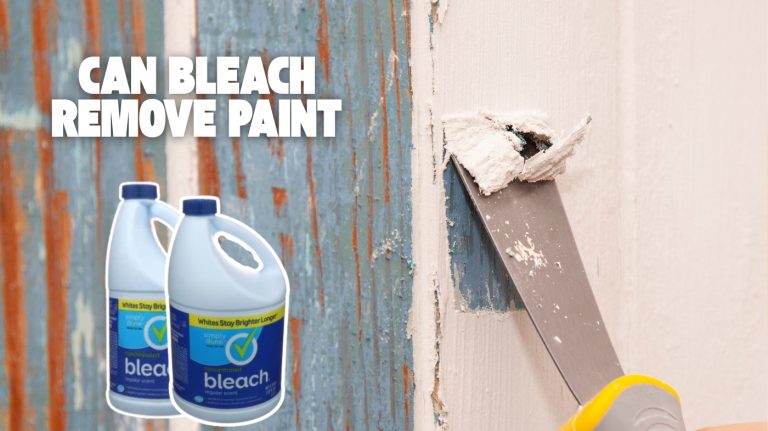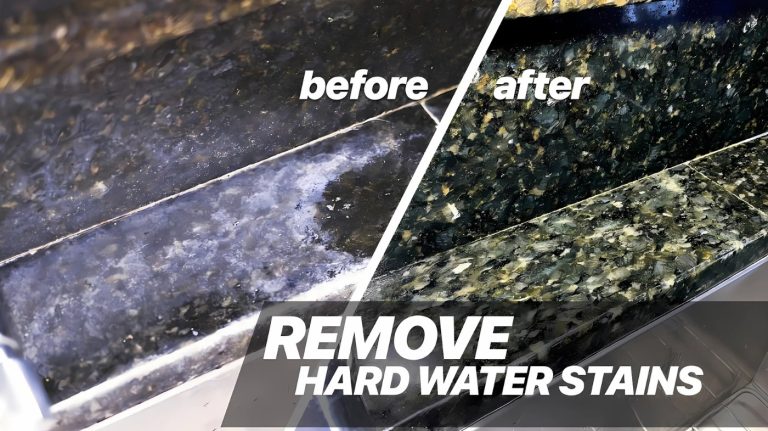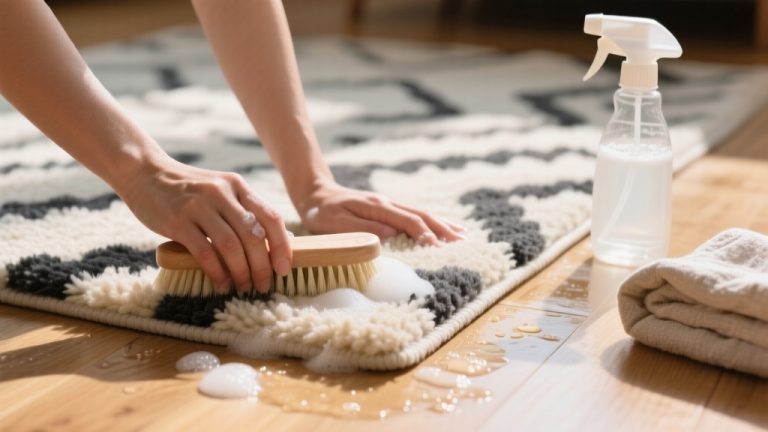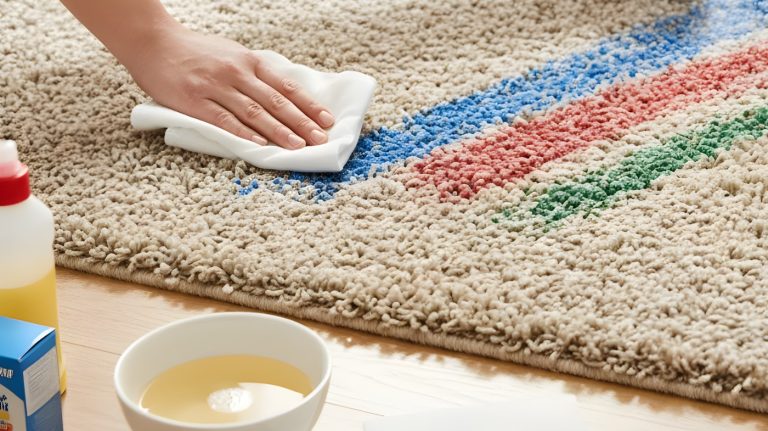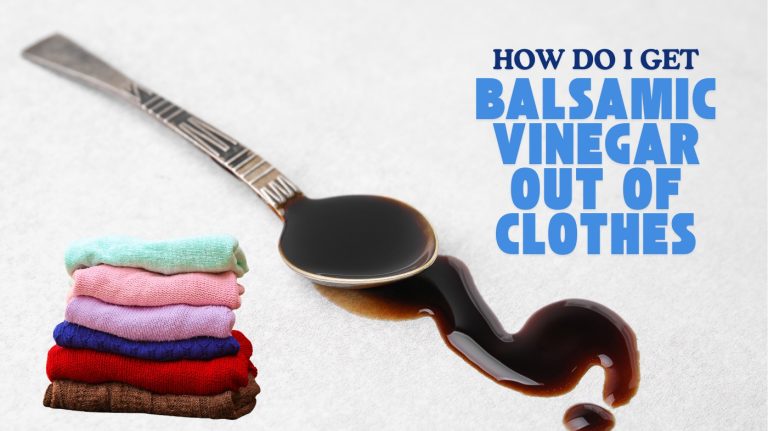Can I Use Bleach with OxiClean? Things to Beware About
You shouldn’t mix bleach with OxiClean because their chemicals react to release toxic gases like chlorine, posing serious health risks. This combination also reduces cleaning power by neutralizing each other’s active agents.
Using them together can cause dangerous pressure buildup and container rupture. Instead, apply each cleaner separately with thorough rinsing and proper ventilation to avoid hazards.
If you want to understand the specific risks, chemical reactions, and safer alternatives, keep exploring the details.
Key Takeaways
- Do not mix bleach and OxiClean as this produces toxic chlorine gas and hazardous reactions.
- Using bleach and OxiClean together reduces stain removal effectiveness due to chemical neutralization.
- Always apply bleach and OxiClean separately with thorough rinsing and good ventilation.
- Mixing these chemicals can cause heat, pressure buildup, and explosion risks in containers.
- Follow manufacturer guidelines and wear protective gear to prevent health and fabric damage.
Chemical Composition of Bleach and OxiClean
Although both bleach and OxiClean serve as powerful cleaning agents, their chemical compositions differ fundamentally, shaping their distinct functionalities and safety profiles.
Bleach primarily contains sodium hypochlorite (NaClO), an alkaline compound that acts as a strong oxidizer through chlorine-based reactions, providing broad-spectrum disinfection and stain breakdown.
It’s an unstable solution, decomposing under heat or light, releasing chlorine gas, and requiring careful handling. OxiClean’s active ingredient, sodium percarbonate (2Na2CO3·3H2O2), releases hydrogen peroxide and sodium carbonate when dissolved, generating oxygen radicals that oxidize stains without chlorine chemistry.
This peroxide-based mechanism is less corrosive and more stable across water conditions. Understanding these distinct chemical bases explains their different oxidation pathways, reactivities, and cleaning applications, highlighting why their compositions influence both effectiveness and safety in use.
When using chemical agents, it is important to consider safety features and application methods to prevent accidental harm and ensure proper handling.
Why Mixing Bleach and OxiClean Is Dangerous?
You shouldn’t mix bleach and OxiClean because their chemical interaction releases toxic gases that pose severe respiratory hazards. This reaction also generates heat, increasing the risk of container rupture or explosion. Ignoring these dangers can lead to acute poisoning, chemical burns, and long-term health complications.
All OxiClean products contain or produce compounds that are dangerous when mixed with bleach. Proper ventilation and protective equipment are essential when using any strong cleaning agents to minimize exposure risks.
Toxic Gas Formation
When you mix bleach, which contains sodium hypochlorite, with OxiClean, a hydrogen peroxide-based oxygen bleach, a vigorous chemical reaction releases oxygen gas rapidly. This rapid oxygen evolution can cause pressure buildup in closed containers, posing explosion hazards.
Unlike mixing bleach with acids, which generates toxic chlorine gas, the bleach–OxiClean reaction mainly produces oxygen gas, which isn’t chemically toxic but can cause physical harm through overpressure. Although no chlorinated toxic gases form, the reaction still releases hazardous fumes, particularly in poorly ventilated spaces.
You must avoid combining these chemicals due to the risk of sudden oxygen gas expansion, unexpected container rupture, and potential inhalation exposure to irritant vapors. Proper ventilation and separate use of bleach and oxygen bleach products are critical for safety.
Additionally, frequent or improper use of bleach mixtures can lead to plumbing damage, so it is important to handle these chemicals with care and avoid repeated or combined applications.
Chemical Reaction Hazards
The rapid release of oxygen gas from mixing bleach with OxiClean sets off a chain of hazardous chemical reactions that extend beyond gas evolution alone. This rapid oxygen generation increases pressure in confined spaces, risking leaks or explosions due to vessel failure, further intensified by heat from the reaction.
Proper ventilation and protective gear are essential to mitigate these safety risks. Wearing gloves and goggles is recommended when handling such reactive mixtures to prevent skin and eye irritation.
Concurrently, reactive intermediates such as hypochlorous acid and peroxides form, destabilizing the mixture and producing corrosive agents. These byproducts can degrade fabrics and surfaces unpredictably, causing discoloration or weakening materials.
Additionally, the reaction yields volatile organic compounds that impair indoor air quality. The complex chemical interactions create unstable compounds that complicate emergency response and cleanup, requiring specialized neutralization.
Health and Safety Risks
Although mixing bleach with OxiClean might seem convenient for tough cleaning jobs, it poses significant health and safety risks due to hazardous chemical interactions. When combined, these chemicals can release irritating gases like chlorine, causing respiratory distress, coughing, and even severe lung damage.
It is important to remember that OxiClean contains sodium percarbonate, which breaks down into hydrogen peroxide and sodium carbonate in water, making its chemical composition distinct from bleach.
Additionally, using cleaning agents improperly can lead to potential fire hazards, especially when residues ignite unexpectedly.
Skin and eye exposure may result in burns, inflammation, and severe irritation due to corrosive byproducts. Additionally, toxic gases formed may cause systemic poisoning, especially dangerous for children and pets.
Improper handling risks chemical spills and environmental contamination. To minimize harm, never mix these agents directly; use appropriate protective equipment and ensure proper ventilation.
The Risks of Toxic Gas Production
When you mix bleach with Oxiclean, a chemical reaction occurs that releases toxic gases like chlorine and oxygen under pressure. These gases pose serious health risks, including respiratory distress and lung damage.
Chemical Reaction Hazards
If you combine bleach with Oxiclean, you trigger a rapid chemical reaction that produces oxygen gas and various toxic chlorinated compounds.
Oxiclean breaks down into hydrogen peroxide, which reacts exothermically with sodium hypochlorite in bleach, releasing oxygen rapidly and generating heat. This reaction can build dangerous pressure in closed containers, risking explosions and physical injury.
Since oxygen bleach products like Oxiclean generally should not be combined with Clorox Bleach, combining different chemistries cancels out their effects.
Additionally, toxic gases such as chlorine and other chlorinated byproducts form, posing respiratory hazards. The mixture destabilizes the chemicals, reducing effectiveness and potentially damaging materials. Proper cleaning materials selection is crucial to avoid hazardous chemical reactions and maintain safety.
Because the reaction speed and severity depend on concentration and environment, you must avoid mixing these substances, especially in confined spaces. Following manufacturer warnings and using these products separately with thorough rinsing prevents chemical hazards and property damage.
Health Risks Exposure
Mixing bleach with Oxiclean doesn’t just create a chemical reaction—it generates toxic gases that pose serious health risks.
When you combine these chemicals, chlorine gas may form, severely irritating your respiratory tract and potentially causing chemical pneumonia or pulmonary edema. Proper ventilation and cleaning safety precautions are crucial to minimize exposure risks.
Even if gas buildup isn’t visible, exposure can rapidly escalate from mild irritation to life-threatening respiratory failure. You must understand these critical risks:
- Chlorine gas causes coughing, chest tightness, and lung damage.
- Chloramine gases induce wheezing, nausea, and shortness of breath.
- Prolonged exposure leads to permanent respiratory impairment.
- Vulnerable groups—children, elderly, and those with pre-existing conditions—face amplified dangers.
Avoid mixing these substances and ensure proper ventilation to prevent hazardous inhalation. Understanding the health and safety risks of improper mixing is essential to avoid accidental poisoning and respiratory harm.
Impact on Cleaning Effectiveness When Combined
Although combining OxiClean and chlorine bleach might seem like a way to boost cleaning power, it actually diminishes stain removal effectiveness due to their conflicting chemical actions.
OxiClean’s sodium percarbonate breaks down into hydrogen peroxide, an oxygen-based bleach oxidizing organic stains. Chlorine bleach, sodium hypochlorite, relies on chlorination to whiten and disinfect.
When mixed, hydrogen peroxide and chlorine bleach chemically react, neutralizing each other’s efficacy and producing hazardous gases. This reaction disrupts both oxidation and chlorination processes, reducing stain removal performance.
For ideal results, apply OxiClean and chlorine bleach separately, allowing each to act independently. Concurrent use cancels their cleaning mechanisms and risks fabric damage.
Sequential use with thorough rinsing preserves both products’ effectiveness and maintains fabric integrity without compromising stain removal.
Additionally, understanding the chemical interactions between cleaning agents helps prevent reduced effectiveness and hazardous reactions.
Manufacturer Safety Warnings and Recommendations
Because combining OxiClean with chlorine bleach triggers hazardous chemical reactions, manufacturers strongly advise against their simultaneous use or storage. Mixing these can release toxic chlorine gas, causing respiratory distress and eye irritation.
Residual bleach combined with OxiClean can degrade fabrics and surfaces, while sealed containers risk pressure buildup and rupture. You must strictly follow these guidelines:
- Never mix OxiClean with bleach or ammonia to avoid hazardous fumes and potential chemical reactions.
- Use protective gloves and eye protection to prevent irritation.
- Store products separately in dry, ventilated areas, away from children and pets to maintain product stability.
- Dispose of residues and containers per local hazardous waste regulations to minimize environmental harm.
Safe Practices for Using Bleach and OxiClean Separately
Handling bleach and OxiClean requires strict separation to prevent dangerous chemical reactions and protect your health. Always use bleach and OxiClean in well-ventilated areas; open windows or use fans to disperse fumes and avoid enclosed spaces where toxic gases could accumulate.
Use bleach and OxiClean separately in well-ventilated areas to avoid hazardous chemical reactions and protect your health.
Wear chemical-resistant gloves, long sleeves, and safety goggles to prevent skin and eye irritation.
Dilute bleach strictly per manufacturer guidelines, using only water, and apply OxiClean in warm water, never mixing the two during application or in storage. Oxygen bleach requires high water temperatures for effective cleaning.
Store each product separately in labeled, secure containers to prevent accidental mixing. When laundering, add OxiClean to the washing machine drum before bleach in separate cycles. Test products on inconspicuous areas first to avoid fabric damage.
Alternative Methods for Effective Stain Removal
When removing stains effectively, you can rely on a range of alternative methods beyond traditional bleach and OxiClean use. These approaches maximize stain breakdown through targeted chemical and mechanical actions:
- Enzyme and Oxygen-Based Removers: Utilize enzymatic action for protein stains and peroxide oxidation for color removal; allow soaking for enhanced penetration. Products like OxiClean MaxForce require a 5-minute soak or overnight for tough stains to achieve the best results, highlighting the importance of soaking.
- Mechanical Abrasion: Apply gentle scrubbing to disrupt surface stains, avoiding fiber damage; combine with chemical agents for deeper effect.
- Temperature and Water Conditions: Adjust water temperature based on stain type—cold for protein, warm for oily stains—and consider water hardness for best remover efficacy. Additionally, detergents such as Tide Plus Ultra Stain Release and Persil ProClean can effectively pretreat stains, sometimes replacing separate stain removers.
- Pre-Treatment Techniques: Use gels or sprays directly on stains, allowing extended contact time to improve molecular breakdown before washing. For example, using a stain remover spray with an overnight soak often improves stain removal performance significantly.
Frequently Asked Questions
Can Oxiclean Neutralize Bleach Odors in Laundry?
You shouldn’t expect OxiClean to completely neutralize bleach odors in laundry. Its soda ash adjusts pH and oxygen compounds oxidize odor molecules, which can reduce some odors. However, OxiClean isn’t formulated specifically to eliminate chlorine bleach smells.
To tackle bleach odors effectively, you need thorough washing with ample water and detergent. OxiClean improves overall odor removal gently but doesn’t chemically neutralize residual chlorine bleach odors on fabrics.
Is It Safe to Store Bleach and Oxiclean in the Same Cabinet?
You shouldn’t store bleach and Oxiclean in the same cabinet because their chemical incompatibility poses safety risks. Mixing chlorine bleach with oxygen-based Oxiclean can release toxic gases, even unintentionally through vapor cross-contamination.
Store them separately in well-ventilated, labeled compartments resistant to corrosive and oxidizing agents. This segregation aligns with OSHA guidelines, reduces inhalation hazards, prevents accidental reactions, and maintains chemical integrity.
Always prioritize safety and proper storage protocols.
Does Using Oxiclean After Bleach Affect Fabric Color?
Using OxiClean right after bleach can affect your fabric’s color if bleach residues remain. The hydrogen peroxide from OxiClean reacts with leftover bleach, causing uneven discoloration or blotching.
To protect colors, you should rinse thoroughly and neutralize bleach residues with vinegar or lemon juice before applying OxiClean. Always test on hidden areas first and follow instructions closely to minimize fabric damage and preserve color integrity during sequential use.
Can Oxiclean Remove Bleach Stains From Clothes?
Imagine you accidentally spilled chlorine bleach on your favorite shirt, leaving a white spot. Oxiclean can’t remove that bleach stain because it targets organic stains, not color loss caused by chlorine.
Since bleach stains result from dye removal, Oxiclean lacks the chemical ability to restore color. Instead, it brightens undamaged fabrics and treats traditional stains effectively, but it won’t fix areas where bleach has chemically altered the fabric dye.
Are There Specific Fabrics Where Oxiclean or Bleach Is Preferred?
You should use Oxiclean on colored, mixed-dye, or delicate fabrics like upholstery, carpets, cotton-polyester blends, and water-washable textiles because it’s gentler and preserves dyes.
Bleach works best on white, bleach-safe fabrics such as 100% cotton linens or kitchen rags, where strong whitening and disinfection are needed.
Avoid bleach on colored or delicate fabrics like wool or silk to prevent damage or discoloration.
Choose based on fabric type and desired effect.
Keep Your Cleaning Safe: Use Bleach and OxiClean Separately
You shouldn’t mix bleach with OxiClean—it’s like lighting a chemical firework you can’t control. Combining them risks toxic gas production and reduces cleaning effectiveness, posing serious health hazards.
Manufacturers clearly advise against it for good reason. Instead, use each product separately, following safety guidelines to maximize their stain-fighting power.
By respecting their distinct chemistries, you ensure both safety and ideal cleaning results without unnecessary risk.

